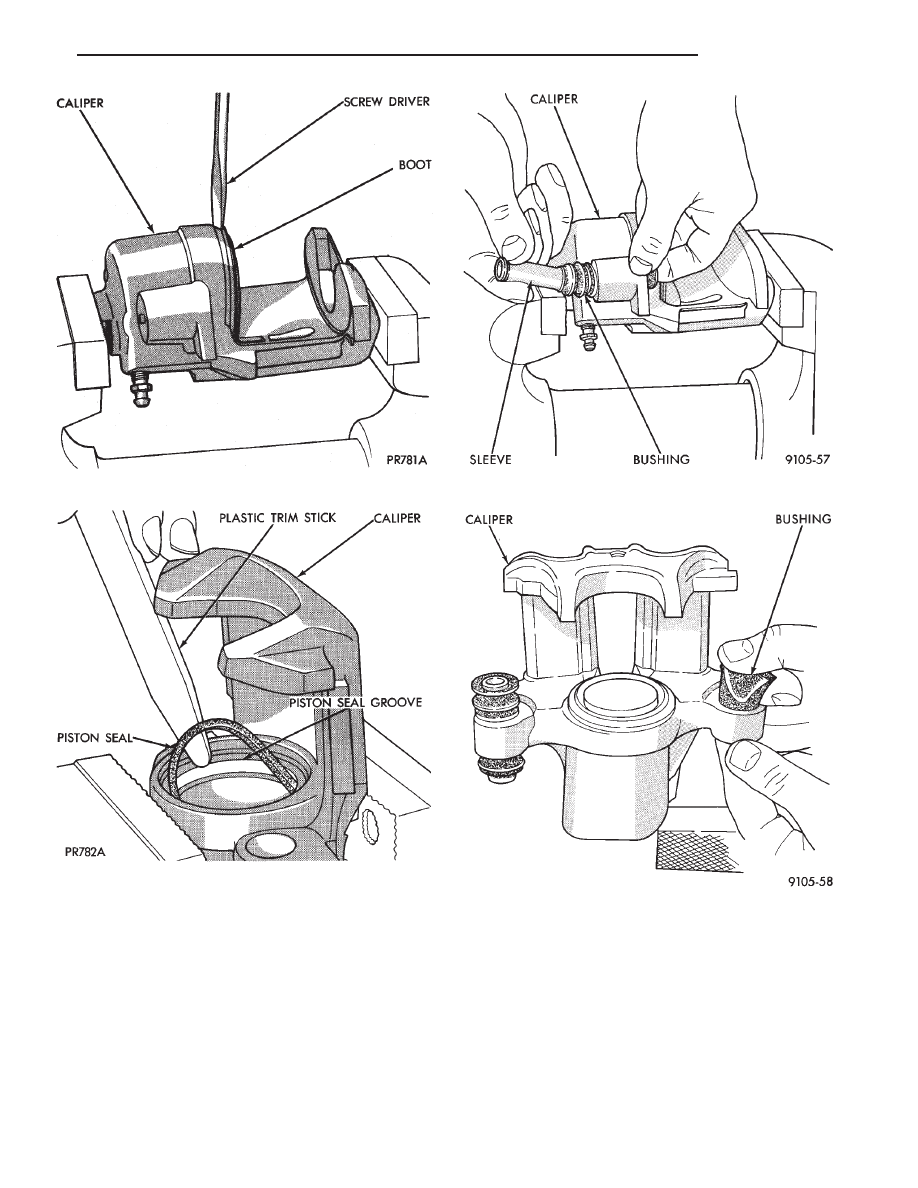Chrysler Town & Country/Voyager, Dodge Caravan, Plymouth Voyager. Manual - part 164

CLEANING AND INSPECTION
Clean all parts using alcohol or a suitable solvent
and wipe dry. Clean out all drilled passages and bores.
(Whenever a caliper has been disassembled, a
new boot and seal must be installed at assembly).
Inspect the piston bore for scoring or pitting. Bores
that show light scratches or corrosion, can usually be
cleared with crocus cloth.
Bores that have deep scratches or scoring should be
honed. Use Caliper Hone, Special Tool C-4095, or
equivalent providing the diameter of the bore is not
increased more than 0.0254 mm (0.001 inch) (Fig. 5).
If the bore does not clean up within this specification,
a new caliper housing should be installed. Install a new
piston if the old one is pitted or scored.
When using Caliper Honing Tool, Special Tool
C-4095, coat the stones and bore with brake fluid.
After honing the bore, carefully clean the seal
and boot grooves with a stiff non-metallic rotary
brush.
Fig. 1 Removing Piston Dust Boot
Fig. 2 Removing Piston Seal
Fig. 3 Removing Inner Sleeve
Fig. 4 Removing Bushings From Caliper
.
BRAKES
5 - 39